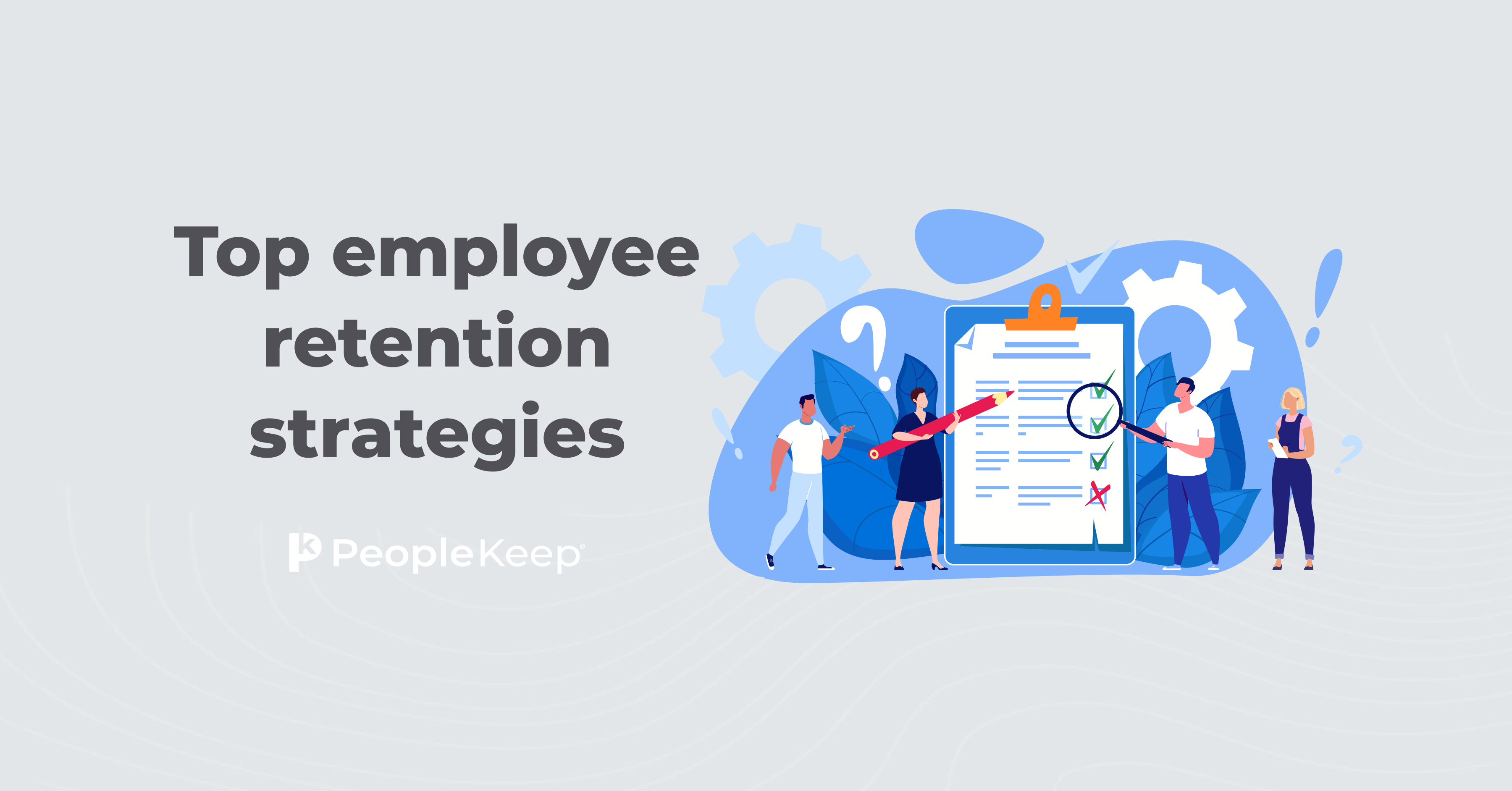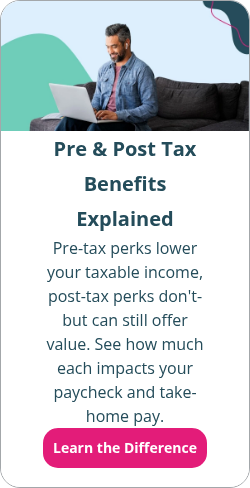What is employee turnover and what causes it?
By Holly Bengfort on February 13, 2025 at 3:45 PM
Losing talented employees isn’t just frustrating—it’s costly. Every resignation means lost productivity and increased hiring expenses. Keeping skilled workers around is essential to long-term success. So, what can you do to keep your team intact?
There are various reasons for employee turnover, from lack of communication to toxic work environments. While you may not always be able to control external factors, you can focus on the internal factors that lead to employee turnover.
So, what’s really driving turnover at your organization? In this article, we'll define and explain the root causes of employee turnover. We’ll also share how to calculate turnover rates and how to lower them by offering comprehensive benefits.
In this blog post, you'll learn the following:
- The differences between voluntary and involuntary employee turnover.
- The common reasons for employee turnover.
- Effective strategies to decrease rates of employee turnover at your organization.
What is employee turnover?
Employee turnover is when employees leave an organization for any reason, usually in search of better opportunities. However, it also includes the number of employees let go by the organization. An employee turnover rate accounts for how many employees leave a company in a specified time period.
There are two types of employee turnover:
- Voluntary turnover: Voluntary employee turnover is when an employee leaves the organization on their own. This could be due to personal reasons, a better job, or a new career path. They could also choose to leave the workforce entirely.
- Involuntary turnover: Involuntary employee turnover is when you choose to part ways with an employee due to poor performance or company finances, either through layoffs or other forms of termination.
How do you calculate an employee turnover rate?
To calculate your employee turnover rate, add up the number of employees lost in a specific period of time. You'll also want to gather the average number of total employees you have.
The turnover calculation goes as follows:
- Subtract the number of any temporary or seasonal employees from each amount. Typically, employee turnover rates don't include temporary workers. They can skew your numbers.
- Now, divide the sum of employees who left by the average number of employees at your organization. Move the decimal two places (or multiply by 100) to get your turnover rate.
For example, suppose you lost five employees this year. On average, you have 30 employees at any given time. We'll input these values into the equation below to calculate our turnover rate.
|
Inputs |
Equation |
|
Number of employees lost: 5 Average number of employees: 30 |
(Number of employees who left / average number of employees) x 100 (5/30) x 100 (0.1667) x 100 = 16.67%, or 16.7% |
What is the average staff turnover rate?
According to the Job Openings and Labor Turnover Survey1 conducted by the U.S. Bureau of Labor Statistics, the average total turnover rate was around 3.3% in December 2024, with 2% for quits and 1.1% for layoffs.
When unemployment is low, voluntary turnover tends to rise, and involuntary turnover tends to fall. While larger organizations typically experience lower turnover rates, smaller businesses often have a greater incentive to minimize turnover due to the negative impact they face when an employee departs.
The greatest variances are between industries. Retail and hospitality industries generally have a high staff turnover rate, while finance and insurance have less turnover.
The table provided by the U.S. Bureau of Labor Statistics2 shows total separations by industry.
|
Category |
December 2023 separations |
December 2024 separations |
December 2024 separations rate |
|
Total |
5,419,000 |
5,269,000 |
3.3% |
|
Mining and logging |
19,000 |
26,000 |
4% |
|
Construction |
335,000 |
279,000 |
3.4% |
|
Manufacturing |
364,000 |
322,000 |
2.5% |
|
Wholesale trade |
173,000 |
139,000 |
2.2% |
|
Retail trade |
584,000 |
616,000 |
3.9% |
|
Transportation |
300,000 |
366,000 |
5.1% |
|
Information |
67,000 |
76,000 |
2.5% |
|
Finance and insurance |
124,000 |
148,000 |
2.2% |
|
Real estate |
80,000 |
70,000 |
2.8% |
|
Professional services |
1,054,000 |
971,000 |
4.2% |
|
Education |
755,000 |
791,000 |
3% |
|
Healthcare |
669,000 |
702,000 |
3.1% |
|
Leisure and hospitality |
1,003,000 |
900,000 |
5.3% |
|
Other |
202,000 |
228,000 |
3.8% |
|
Government |
360,000 |
340,000 |
1.4% |
What causes employee turnover?
While there can be many causes for employee turnover, certain aspects of the employee experience tend to be the biggest drivers of turnover.
Some of the most common reasons for high turnover are:
- Pay and benefits
- Lack of professional development or career advancement
- Burnout
- Poor onboarding processes
- Poor management
- Feeling disrespected or unappreciated at work
Let's go over each in more detail below so you can combat these common challenges in employee retention.
Pay and benefits
Inadequate compensation is often a top reason for voluntary turnover. This is usually due to a lower-than-expected annual salary or a lack of raises. Poor employee benefits can also cause your talent to leave for better opportunities.
To retain your employees, you need to stay updated on what your competitors are offering. If your contenders offer a more comprehensive benefits package or a more competitive salary, they'll entice your employees to apply.
Establishing yearly cost-of-living wage increases and offering benefits is a great way to keep your employees engaged and improve employee satisfaction.
Lack of career growth opportunities
Nobody wants to feel stuck in a rut at work. Employees value organizations that provide career advancement opportunities. Education benefits or promotions can foster your employees’ career growth and professional development.
Poor promotion practices create staff turnover because people feel like management passed over them. To combat this, organizations need to communicate open opportunities with employees and prioritize promoting within.
Speak to internal candidates who weren't selected for a promotion or new role as soon as possible to preserve your relationship. Be prepared to address any concerns or questions they may have. Work with these employees to share what they're doing well and what they can work to do better next time.
Encouragement and recognition are key for retaining employees in these situations.
Burnout
A job is important, but it often isn't everything to your employees. Your employees have a life outside your organization, and they shouldn't spend all of their free time working. If your employees constantly put in overtime, don't take breaks, or never go on a vacation, their work-life balance will suffer.
SHRM’s Employee Mental Health in 2024 Research Series3 found that employees who are burned out from their work are nearly three times more likely to be actively searching for another job.
While burnout can lead to employee turnover, there are other adverse effects. Burnout can also cause physical and mental health issues such as depression and heart problems for your employees.
To avoid employee burnout, you can offer breaks or ample paid time off (PTO). You should also set realistic expectations for your employees.
Poor onboarding process
Onboarding is a way to set your new hires up for success by providing them with all the information and resources they need to do their jobs effectively. However, some organizations fall short of this goal.
To avoid a high new hire turnover rate, your hiring process and onboarding process should help new hires feel welcomed and prepared. Introduce your new employees to their co-workers and show them around. Answer any questions they may have, and inform them of any employee perks or benefits.
Bad managers
According to the latest LinkedIn Workforce Confidence survey4, seven out of ten workers in the U.S. said they would quit their jobs if they experienced poor management. If a leader's management style is critical or combative, it doesn't create a positive work environment. Profits, job performance, and turnover rates all take a hit when a company's culture turns toxic.
To keep this from happening at your organization, keep an open line of communication with your employees. Fostering two-way communication between managers and employees is essential for your organization's growth and prosperity. Plus, some of the happiest employees are those who feel seen and heard by their managers.
Feeling disrespected or unappreciated at work
Don't let a lack of recognition or respect drive your employees out the door. Organizations need to promote an inclusive company culture where everyone feels welcomed and appreciated.
MetLife's 22nd Annual U.S. Employee Benefit Trends Study5 found that employees who feel cared for by their employers are 60% more likely to stay at their organization. You can show your employees you value them by celebrating their successes and efforts year-round. This could be through compliments and words of encouragement or employee recognition programs.
Employee happiness is a major indicator of job satisfaction. Investing in your employees' happiness and making them feel valued can help you keep them engaged and productive, reducing employee turnover.
What are the real costs of employee turnover?
Losing an employee comes at a price, especially for small business owners. High employee turnover can lower employee morale, which damages employee culture.
Since you'll be down a team member, other employees must pick up the slack. This leads to increased workloads for your remaining employees. This can decrease overall productivity and lead to employee burnout.
However, the greatest turnover cost is the expense of hiring a new employee to take their place. According to Built In6, the average cost of replacing an hourly employee is $1,500. And this number only scratches the surface, as certain positions will cost more to replace.
Which benefits reduce employee turnover?
With benefits playing a major role in why employees quit their jobs, it's important to offer perks your employees want. This section covers some of the best employee benefits you can include in your employee retention strategy.
Health benefits
Health benefits are one of the most desired perks you can offer.
Traditional group health insurance is an option for businesses that want to provide comprehensive coverage to their employees. However, the lack of flexibility in a group health plan can put some employees at a disadvantage. Group health insurance may not be cost-effective or easy to manage for many small to medium-sized businesses.
Employees increasingly desire flexibility in their workplace, and that includes perks. Offering personalized health benefits allows your employees to choose how they want to use their best.
Health reimbursement arrangements (HRAs) are a better option for businesses because of the flexibility and cost savings they provide.
With an HRA, you reimburse employees for their qualifying medical expenses, such as out-of-pocket expenses for prescriptions or office visits. Depending on the HRA you offer, you can also reimburse employees for their individual health insurance premiums. That way, your employees can purchase the coverage that best fits their needs.
You set monthly allowances for your employees to use on their medical expenses. Unused funds roll over until the end of the benefit year. These reimbursements are tax-free for both employers and employees.
Three of the most popular types of HRAs include:
- Individual coverage HRA (ICHRA)
- Qualified small employer HRA (QSEHRA)
- Group coverage HRA (GCHRA), also known as an integrated HRA
Health stipends are another great option for businesses of all sizes. Like with an HRA, you can offer your employees a monthly allowance for their medical expenses. However, health stipends are taxable. You have to report them as additional income on your employees' W-2s.
A health stipend is an excellent option if your employees receive advance premium tax credits (APTCs), as they'll be able to claim their APTCs and use the full health stipend benefit. You can also offer stipends to international employees and 1099 contractors. Otherwise, HRAs are often better for businesses because of their tax advantages.
Wellness benefits
Offering your employees a wellness benefit is a great way to reduce employee turnover. Wellness perks help boost employee productivity and employee engagement by reducing stress and improving your employees' overall well-being.
Some businesses create comprehensive wellness programs featuring in-office classes, mental health counseling, and fitness programs, just to name a few examples.
Instead of creating a wellness program, you can offer your employees a wellness stipend. Wellness stipends help you easily offer an employee benefit while giving your employees control over how they use their benefit.
You give your employees a monthly allowance for wellness. This could be for gym memberships, fitness classes, exercise equipment, and more.
Remote work or flexible work arrangements
To attract job seekers and reduce employee turnover, employers should think about providing greater flexibility in their work arrangements. PeopleKeep's 2024 Employee Benefits Survey found that 57% of employees believe it’s important to have access to remote work or a hybrid work environment. By offering flexible work arrangements, your employees experience a healthy work-life balance since they can tend to their professional and personal lives with greater ease.
Conclusion
Understanding the common causes of employee turnover and how to avoid it can help you retain your employees and improve their well-being at the same time. If you want to know what's driving your workers to leave, consider conducting an exit interview.
When you allow high-performing employees to move up in your company, you give them a reason to stay. You can also provide a great onboarding experience, recognize accomplishments, and offer competitive compensation and benefits to help reduce employee turnover at your organization.
This blog article was originally published on January 21, 2020. It was last updated on February 13, 2025.
Check out more resources
See these related articles

Employee retention: The real cost of losing an employee
The true cost of employee turnover goes beyond just recruitment expenses. Discover the hidden costs of losing an employee and how to mitigate them.

Top employee retention strategies
Looking for effective employee retention strategies? This guide provides you with proven tactics to reduce turnover and increase employee satisfaction.

Reducing Employee Turnover - 12 Tips for Small Businesses
Reducing employee turnover. From hiring to retaining top talent. Check out these 12 tips for reducing employee turnover at small businesses.



